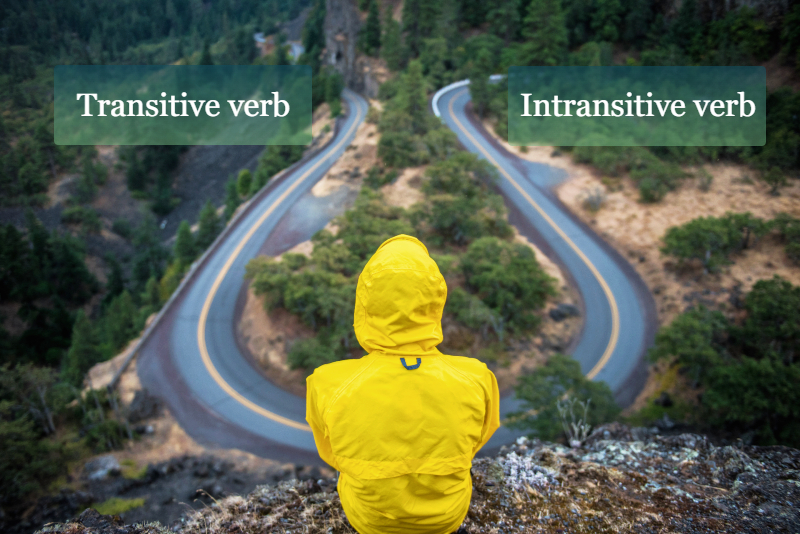Transitive and Intransitive Verbs — How to Tell Them Apart?
November 30, 2022| Category: Writing Tips
There are transitive and intransitive verbs depending on whether one should use an object after them to communicate a complete idea. When used in a sentence, transitive verbs make sense merely when they have an object after them. Intransitive verbs, however, can be used on their own and be meaningful. There are also verbs that can be used either way.

People associate the very word “transitive” with “transit”, which makes one think of some movement and action. Still, this association often leads to confusion, because transitive and intransitive verbs have nothing to do with action or non-action. It is better and more logical to connect the meaning of the word “transitive” to the word “transfer” – a transitive verb transfers its action to some object, which could be a person or a thing. So, transitive verbs actually affect someone/something else.
With this connection in mind, it should be easier for you to differentiate between them and understand the logic behind the usage of transitive and intransitive verbs in English.
How to Differentiate Transitive Verbs?
Transitive verbs are not those that can just have an object after them – they actually demand an object and bear no completed or logical meaning in a sentence without the object. If you read a sentence with a transitive verb that has no object, it will look incomplete.
For example: Please give soup to me.
The verb “give” is transitive and “soup” is an object – it is something that I ask you to give. If you imagine there is no object in this sentence, it would hardly make any sense.
For example: Please give.
Give what? Give who? The very verb “give” naturally demands some object after it.
Take a look at some more examples of how transitive verbs are used with objects:
The men carry bottles of water from the car.
Jane brought her toys.
Could you phone me after work?
My colleague passed a message to me.
Verbs in each of these sentences have objects after them as they complete the actions conveyed by verbs. If you remove objects, the sentences will make no sense to the readers. For example: Jane brought. Brought what?
How to Differentiate Intransitive Verbs?
Intransitive verbs oppose to transitive in their function and usage. They do not require objects after them to communicate an idea across.
For example:
They run.
The dog jumped.
He cried.
Light was blinking.
None of the verbs used in the sentences above need an object to bear sense. You can put a full stop after verbs and the sentence would be complete. More so, if you use an imperative form of the verb, you can produce a good one-word sentence.
For example:
Say!
Jump!
Run!
Some verbs in English can be only intransitive and they cannot take an object after them, whereas some other can be both transitive and intransitive depending on the context. Verbs “die” and “arrive” can be merely intransitive. One cannot die something (in the meaning of “stop living”) and one cannot arrive something either.
Transitive or Intransitive? In Some Cases They Can Be Both
Some verbs can be both transitive and intransitive depending on the meaning they have in a sentence. For example:
Asked by the teacher, students sang.
Students sang a famous song at the concert.
After she completed all work, she left.
She left a book on the table and went home.
To identify whether the verb is transitive or intransitive, pay attention to whether it should have an object. Did they sing something? Did she leave something? Here the answer is obvious – yes.
If you hesitate about the type of verb to use, you can look up this information in dictionaries. This information is usually provided under the pronunciation key. Moreover, you can find out differences in meaning when looking at the examples.
How to find this information in the dictionary? After the word entry, pay attention to the symbols “vt” or “vi”, which mean transitive verb and intransitive verb correspondingly. In case a verb can be both transitive and intransitive, you will find examples for each usage in the dictionaries.
Being able to clearly differentiate between transitive and intransitive verbs will help you succeed in writing. Just mind that transitive verbs always have an object after them to sound logical and make sense. It is essential to identify them since transitive and intransitive verb may have different meaning.
